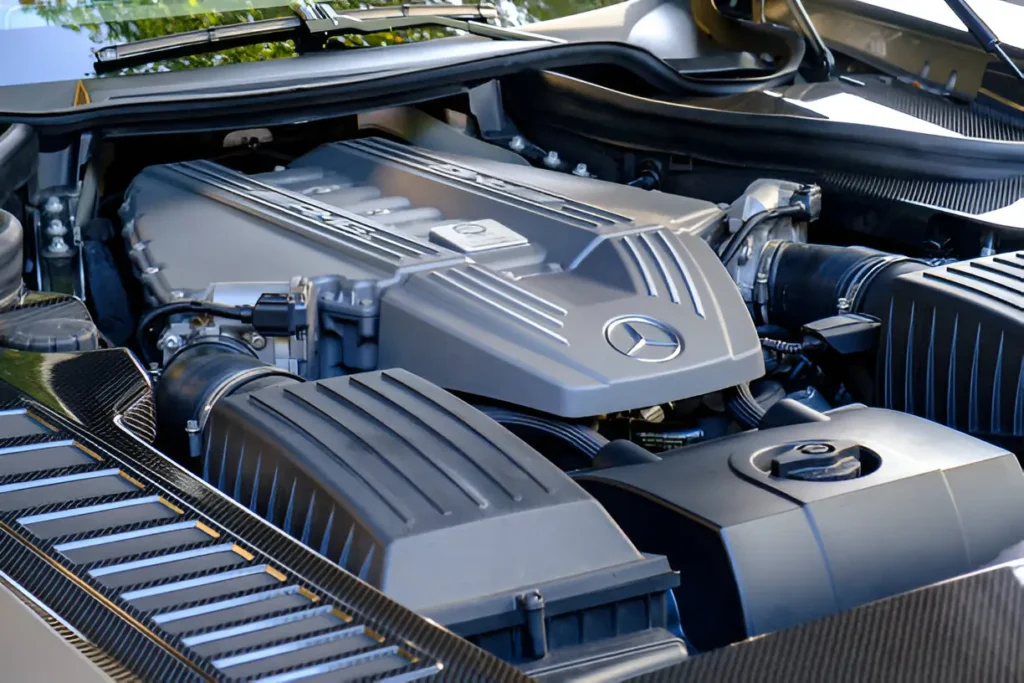Picking the right parts for your Mercedes shouldn’t feel like solving a puzzle, but honestly, it can be pretty confusing with all the options out there. Spare parts for Mercedes Benz come in three main categories – genuine OEM, OEM equivalent, and aftermarket – and each has its place depending on your specific situation and budget. Mercedes produces over 2 million individual components across their current and legacy vehicle lines, so understanding which type of part makes sense for your particular repair can save you both money and headaches down the road.
Understanding Your Mercedes’ Specific Requirements
Before you start shopping for parts, you need to know exactly what your car needs. This goes way beyond just knowing it’s a C-Class or E-Class. Mercedes vehicles have incredibly specific configurations based on production date, engine type, transmission, and even optional equipment packages.
Your VIN (vehicle identification number) is like your car’s DNA. The 17-character code tells parts suppliers everything they need to know about your specific vehicle configuration. For example, a 2019 C300 with 4MATIC all-wheel drive needs different parts than the same year C300 with rear-wheel drive, even though they look identical from the outside.
I learned this the hard way when I tried to replace brake pads on my friend’s Mercedes without checking the specific brake package. Turns out his car had the AMG brake system, which uses completely different components than the standard setup. The part numbers weren’t even close.
Mercedes also updates parts during production runs. A part that worked for early 2020 models might not fit late 2020 models if there was a mid-year engineering change. This is why having your exact production date matters when ordering components.
OEM Genuine vs OEM Equivalent Parts
Genuine Mercedes parts are made by the same suppliers who provide components for the factory assembly line. These are the gold standard – perfect fit, guaranteed compatibility, and full warranty coverage. But they’re also the most expensive option, sometimes costing 2-3 times more than alternatives.
OEM equivalent parts come from the same manufacturers but are sold under different part numbers for the aftermarket. Here’s the interesting part – many of these are literally identical to genuine parts, just packaged differently. Companies like Bosch, Continental, and Sachs supply both Mercedes directly and the aftermarket.
The tricky part is figuring out which OEM equivalent parts are actually identical and which are simplified versions. A genuine Mercedes air filter might have multiple filtration layers and specific coatings, while the OEM equivalent version could be a basic filter that meets minimum specifications but doesn’t provide the same level of protection.
Quality varies significantly between OEM equivalent brands. Febi Bilstein and Lemforder generally maintain standards very close to genuine parts. Other brands might cut corners on materials or manufacturing tolerances to hit lower price points.
When to Choose Aftermarket Options
Aftermarket parts get a bad reputation, but some are actually excellent alternatives for certain applications. The key is knowing which components can handle aftermarket substitution and which ones absolutely need OEM quality.
For wear items like brake pads, air filters, or spark plugs, high-quality aftermarket options from reputable brands often perform just as well as genuine parts. Companies like Akebono for brakes or Mann for filters have decades of experience and maintain strict quality standards.
However, electronic components, sensors, or complex mechanical parts usually need genuine or OEM equivalent quality. Mercedes’ electronic systems are incredibly sensitive, and aftermarket sensors often don’t communicate properly with the car’s computer systems.
I’ve seen people save money on aftermarket oxygen sensors only to deal with check engine lights and poor fuel economy because the sensor’s signal wasn’t quite right for Mercedes’ specific calibration requirements.
Cost-Benefit Analysis for Different Repair Scenarios
The age and value of your Mercedes should influence your parts choices. If you’re maintaining a newer vehicle under warranty, genuine parts are usually the smart choice to avoid any warranty complications. For older, high-mileage vehicles, the cost-benefit equation changes.
On a 15-year-old Mercedes with 200,000 miles, spending $800 on a genuine transmission component might not make financial sense if a quality aftermarket part costs $300 and will last just as long for your remaining ownership period.
Labor costs also factor into this decision. If you’re paying $150 per hour for Mercedes specialist labor, it makes sense to use parts that are guaranteed to work correctly the first time, even if they cost more upfront.
The Rise of Streetwear Hoodies and How They Shape Modern Fashion – Spiritual Meaning Portal
Proven Strategies to Maximize Returns Through Direct Property Investment – Spiritual Meaning Portal







